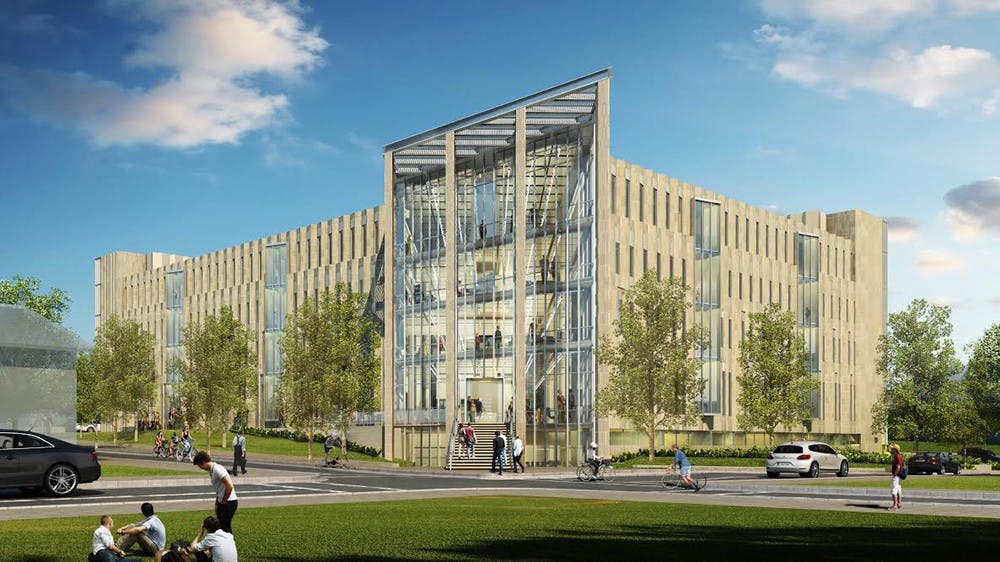Shea, senior director of planning and communications for the School of Informatics and Computing, has worked on the plans for Luddy Hall for three years.
The groundbreaking ceremony for the new building for the School of Informatics and Computing occurred Friday, Oct. 2.
The building is named for the Luddy family, many of whom are IU alumni. Fred Luddy, a former IU student, donated $8 million for the building’s construction.
“I think the word transformative is overused, but I think it truly will be transformative for our school,” Shea said.
Robert Schnabel, dean of the School of Informatics and Computing, said the school has grown rapidly in recent years and the school’s facilities are spread across the campus.
Computer science is located in Lindley Hall, and information and library science is located in the Wells Library. These two units will move into the new building.
“It will bring the school together in proximity in a way we haven’t been before,” Schnabel said. “It will supply a lot more space than we’ve had before, and it will do an awful lot for collaboration and for entrepreneurship and innovation.”
Luddy Hall will be the first building in the Woodlawn corridor, which connects the central part of campus to the northern edge, where the sports complexes are located.
Among other features, the building will have seven classrooms, including a 160-seat collaborative auditorium, a café, a 1,360-square-foot student community center and a 3,500-square-foot innovation center.
Shea said the space will be devoted to developing ideas, nurturing innovation and launching companies, and Schnabel said the center helps achieve one goal of the school, which is to play a role in entrepreneurship in the tech community.
The building has 19 conference and focus rooms, 21 undergraduate advising and career services offices and 11 interview rooms.
“This is a building that is designed for community and collaboration,” Schnabel said. “There is lots of openness to it, lots of meeting spaces to it, both for students, faculty, grad students. The grad students who work with the faculty will be located right near them. People will see each other a lot ... There was a huge push toward community building.”
Shea said the planning process began three years ago. During this time, a committee of people within the School of Informatics and Computing met periodically to discuss ideas for more specific aspects of the building.
Out of this committee, Shea said several specific aspects of the building were added, including a lactation room for nursing mothers and showers for people who bike or walk long distances to the building.
The new intelligent systems engineering program, which will have students starting fall 2016, will be housed mostly on the fourth floor of Luddy Hall.
“We had built into the plan a fourth floor that was for growth,” Shea said. “So when the Indiana Commission for Higher Education gave the final okay for the engineering program in August of this year, that growth became the engineering program.”
A fabrication laboratory in the building will provide space for students to build things using technology such as 3D printers, a feature Schnabel said is useful to engineering students, as well as other students at IU.
The building’s exterior will use Indiana limestone and large windows.
“I think the design has maintained the basic DNA of an IU building, but it’s extended that in a very modern and sleek way,” Shea said. “That’s part of what will make it different — the way that it looks on the outside. But the other part about what makes it different is the way that it will feels on the inside. This building is really set up to be collaborative. It will encourage innovation.”






